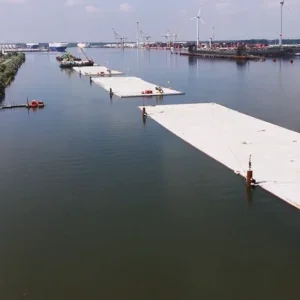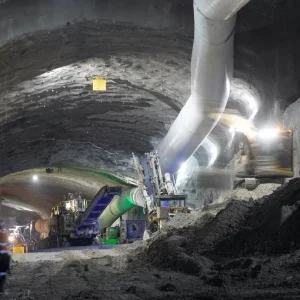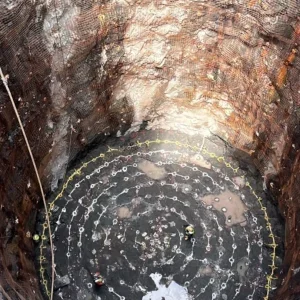Tunnelling is not normally the headline industry at Bauma. While well-represented, it can feel niche by comparison as one walks around the exhibit halls and the immense outdoor displays, which are dominated by cranes. However, at Bauma 2019, there was an event that differed from this accepted norm.
A selection of high-profile Chinese manufacturers got together to host a press conference on the topic of ‘Globalising the Chinese Construction Equipment Industry’.
It quickly became apparent that excavation equipment is a new focus for these companies, despite their other activities, and more can be expected.
The event was organised by the Chinese Ministry of Commerce as well as the industry bodies China Construction Machinery Association (CCMA) and China Chamber of Commerce for Import and Export of Machinery and Electronic Products (CCCME).
CCMA president Qi Jun said that in the 40 years since China opened itself to the world, it has built 30,000km of rail, 5,500km of metro and Chinese equipment in found on construction sites all over the world. He added, “Our event today is a statement. Our companies have invested heavily in R&D and the technology gap is narrowing. Overseas sales represent 25 per cent of the revenue of our companies.”
While there were more than 400 Chinese companies at Bauma (and the presence of Chinese companies has been increasingly felt at other tunnelling industry events), Wang Min, the chair of manufacturer XCMG puts this in a historical context: “At our first Bauma we had a shabby booth and a few photos, but we got our first export order. Now it is 10 Baumas later and last year we saw a profit increase of 89 per cent.
“I would like to see our overseas revenue grow to a 50 per cent share. The underground is our route to this; we want to build a better home for humans, that is to say, a better future and a more prosperous world.”
Liu Feixiang, chair and chief scientist of CRCHI spoke about some of the risks in going abroad. CRCHI was founded 12 years ago, but for its first eight years it focused entirely on the domestic market and R&D while it laid its plans. It launched into the international market in 2016 and supplied 30 TBMs.
“There are cultural and legal risks in going to other countries, and you have to be prepared for these. We have been successful though. We employ 1,300 people in our R&D department, which represents 5 per cent of our total spend, so we are active in development instead of purchasing technology.
“It is important to have your own core competency and understanding. Six years ago, Russian companies were helping us build metros, now we are able to help the Russians.”
For Sunward, the key to the international market was meeting European marketing requirements and working on improving after-sales support.
Readers will probably be most familiar with CREG, which was founded 10 years ago to focus on the underground market and now has 200 employees. As of the press conference in April, the company claimed to have sold 876 units and has also focused on high-end markets such as Israel, Italy, Denmark and France to try to build a reputation.
Liugong’s general manager Dawei He came out and directly thanked the Chinese government for its globalisation strategy. Although the company is 60 years old, it has only been gaining European experience. He says that mature markets are difficult to break into, while the developing markets are approximately 30 years behind.
“There is a learning curve, and that needs to be paid for. We had to learn the value chain and make ourselves userrather than solely product-focused. This idea of adding value. It is not always possible for us, and there are some specific market segments that we will still have to wait for.
“There is a tendency among Chinese manufacturers to focus on the premarket, and now we are realising the importance of whole life cycles. It’s a marketing strategy that we need to learn, and we have pilot projects to work this out. Mature markets demand userorientation.”
Wang Weidong, the minister counsellor of China’s embassy to Germany struck a conciliatory tone, given the current political climate: “there is some concern about the rise of China in Europe and the US. I do not think we should regard competition as a threatening matter, but a chance to improve.
“The market is slowing, so we should co-operate. The scale of the Belt and Road Initiative is expanding and international co-operation there is essential, for example.”
The Belt and Road Initiative (BRI) is an enormous investment project. The scheme aims to improve the infrastructure of China’s neighbours, near and far, and in a sense recreate (and expand) the ancient Silk Road trading route.
The BRI has now entered its sixth year and typically represents about 75 per cent of the exports of these manufacturers.







